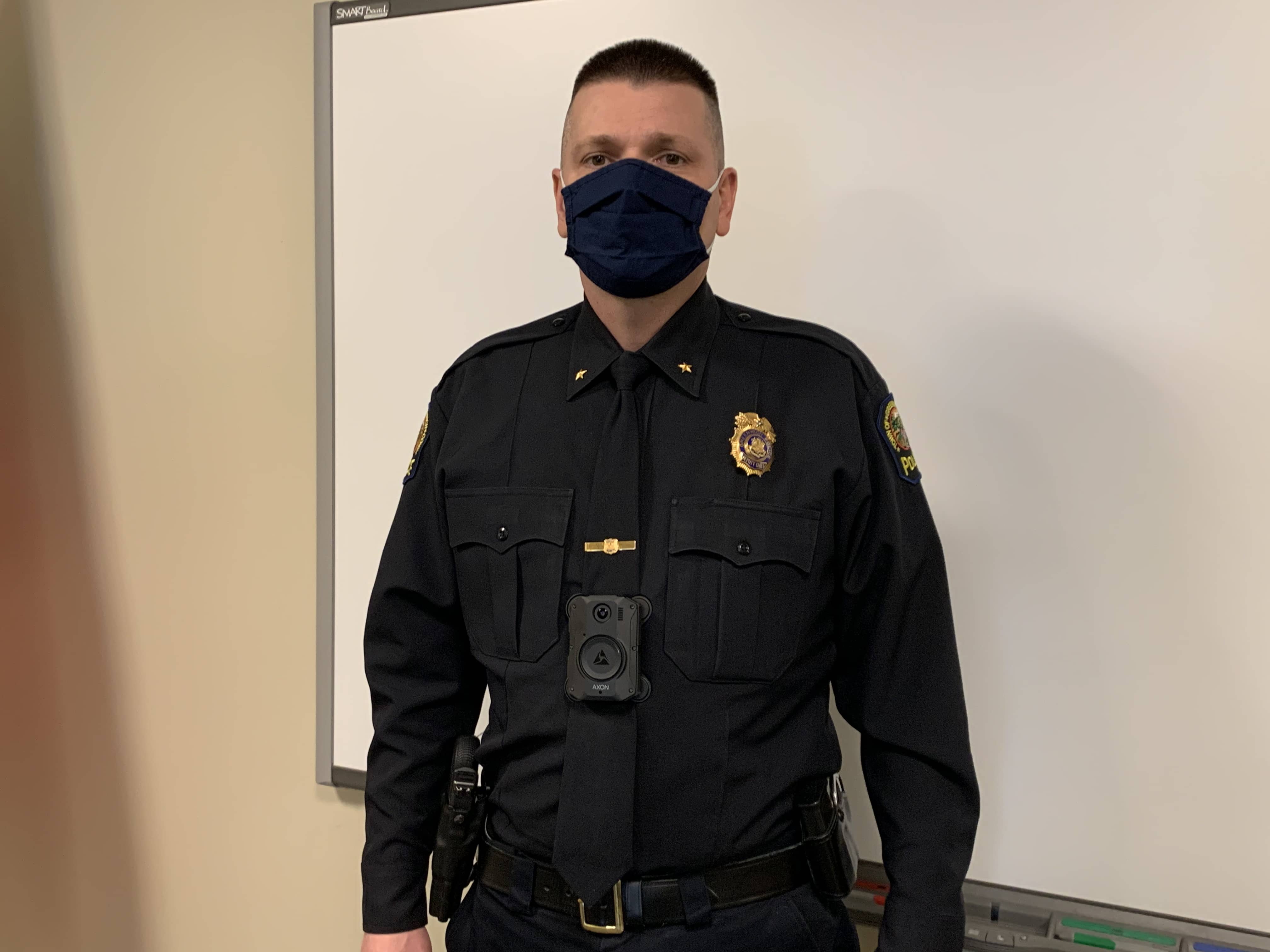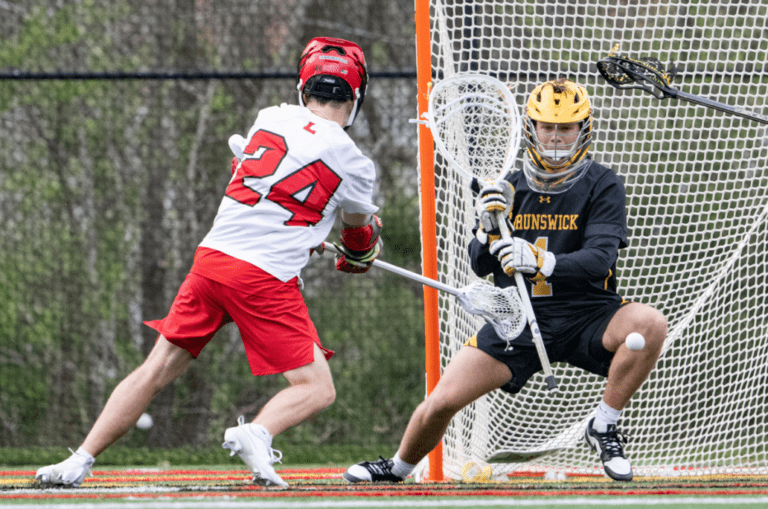By Richard Kaufman
Over the past year, especially following the death of George Floyd in Minnesota, there has been an increased outcry for police reform and more police accountability measures across the country.
In Connecticut last summer, Gov. Ned Lamont signed a sweeping police reform bill. Included in the bill was a mandate that all municipalities in the state implement police-worn body cameras by July 2021 and patrol car dashboard cameras by summer of 2022.
The GPD subsequently entered into a five-year, $1.16 million contract with Axon, a company that develops technology and weapons products for military, law enforcement and civilians, to purchase 160 body cameras.
Funding for the cameras was approved by the Greenwich Representative Town Meeting in September, and officers began testing them in October.
As officers began to receive training, they were taking the cameras out into the field. Now, just about the entire department has been fully trained.
“We’re learning more and more about them,” said GPD Deputy Police Chief Robert Berry. “One of the challenges from a policy perspective, is knowing when to turn it on, when to turn it off, and where to place the camera. That’s one of the things we’ve been continually adjusting to. We’re understanding and learning things as we go.”

GPD Chief James Heavey has been a proponent of the cameras for a number of years, and he wanted them in the department ahead of the state mandate. He feels they will only strengthen the good relationship that officers have with the Greenwich community.
“We feel we have an excellent relationship with our community, so this is going to be one of those things where we continue to work on that. As far as accountability and transparency, we already have a lot of those things in place,” Heavey said of some aspects in the police bill, noting that the department already has officers wearing name tags and has them working with human services agencies in town. “This new police accountability bill has required us to document that in a way and add these cameras as a requirement, but I think it will be a positive.”
Berry added that the cameras will provide assurance to the community that the GPD is a dedicated, professional agency that follows policy. He said the cameras will keep all parties honest during police interactions, because the camera will serve as a reminder that any action will be on record.
“It’s good for our officers and their safety. It protects the officer, because people can’t make up baseless accusations now because we’ve got the officer’s version of events right there. It keeps everyone honest on all sides. More often than not it’s going to help things,” he said.
First Selectman Fred Camillo was an early advocate for the cameras and said they will reduce liability for the town.
“Having cameras will certainly make clear any questions about what happens at various scenes. We are blessed with a great police force here in town. Like everything else, they strive and we strive to be even better. This I think enhances their ability to better serve the public. The public around the country has asked for it. Here’s one of those examples where everyone agrees it’s the right thing to do,” he said.
How the Cameras Work
Whenever an officer is dispatched to a scene or knowingly interacting with the public, he or she will press a button on the camera twice to activate it. Because things tend to happen quickly out in the field and the device might not be activated at the correct moment, the camera is essentially always recording. When it’s activated, it reaches back and grabs the previous 30 seconds of video only.
The technology of the camera is purposely designed to resemble the human eye as close as possible.
The camera will shut off when it’s prompted. When officers go off duty, they’ll take the camera off and recharge it. One charge will yield roughly 12 hours of operating time, according to Axon.
“That’s one of our challenges,” said Berry of the charge time. “We have to make some considerations when an officer is working a double shift.”
While the camera is charging, any video that was taken is uploaded into a cloud-based service developed by Axon on the website evidence.com. Members of the GPD are the only ones who have direct access to footage on the backend of the website; not even Axon can view the data.
One of the key features of the service that comes with the cameras is the ability to crowdsource evidence from the public. The idea was created in the wake of the Boston Marathon Bombing, when authorities had to piece together video footage from different vantage points, according to GPD Police Technician Matthew Nardi, who also works in IT for the Department.
“Let’s say there are one of these scenes where everyone has their phones out, and everyone is recording something, or even just one random person happens to catch something on their phone, the investigating officer on scene can actually through the app, send a message to that person with a link in it,” Nardi said. “It’s a temporary link that expires, but you can go into the link and you can download the video or pictures you have on your phone to that link, and it will go into our evidence on evidence.com.”
Heavey said the evidence from the public, matched up with the officer’s body camera footage as well as the officer’s GPS location on a map that’s generated from a recording camera, can help paint a three-dimensional picture of an important scene.
The Stamford Superior Court has its own subscription to evidence.com and can request footage and the information needed to prosecute a case.
“This can come in very handy for officers responding to motor vehicle accidents, or to calls for domestic violence. There are a lot of circumstances where a picture is worth a thousand words, and this will make it even better. It’s not perfect, but it will give a perspective from where the camera was,” Heavey said.
Every time a video is viewed, there’s an audit trail. The GPD will be able to see who viewed what video, and for how long.
“All these things are documented, where before, you hand over a thumb drive or a CD-ROM and who knows how many copies have been made or who viewed it?” Berry said.
Privacy Concerns
Privacy for the general public and the releasing of footage has been a major point of discussion when it comes to police body cameras.
“Releasing that footage to the public is arguably going to be one of the most contentious topics at times. We’re trying to build community trust so they understand that most of the time this is going to be for a positive thing to show the officer followed policy,” said Heavey.
Berry said the department understands the conversation about privacy and is sensitive about it, but residents shouldn’t be concerned. Included in the contract with Axon is interactive software with redaction capabilities.
Berry reiterated the fact that the cameras are now required by legislation, and the public will be seen on video. But the department will still handle the footage the same way they do with other forms of evidence, records or reports.
“Our same restrictions on how we disseminate records still applies to these [videos]. Just because someone might be captured on a body cam, it doesn’t mean the next day it’s going to be up on Youtube, or wherever else. It still has those same record retention restrictions,” Berry said.
With regards to video storage in the cloud, the Department has set up parameters based on the state FOIA requirements, Berry said.
“If it meets certain criteria, it will stay [in the cloud] potentially forever. Other criteria, it’s a certain amount of time, and it will go away,” Berry added.
Going Forward
With almost the entire department outfitted with body cameras, Heavey and Berry admitted that it’s going to take some time to build up muscle memory and get used to operating the cameras.
“It’s another tool in the tool box,” said Heavey.
As part of the contract, if a camera breaks, or new technology comes out, Axon will send replacements. Officers will also have to undergo refresher training at certain points on the cameras, per state legislation.
Funding for dashboard cameras is included in the GPD’s proposed 2021-2022 budget. If it’s approved, Heavey said that equipment will be purchased some time after July 1 and implemented by this time next year. They will only be used on patrol cars.




